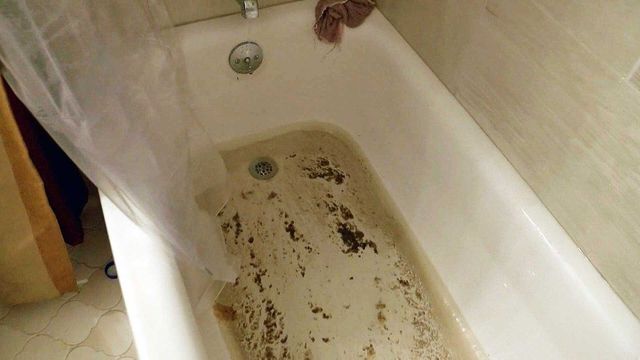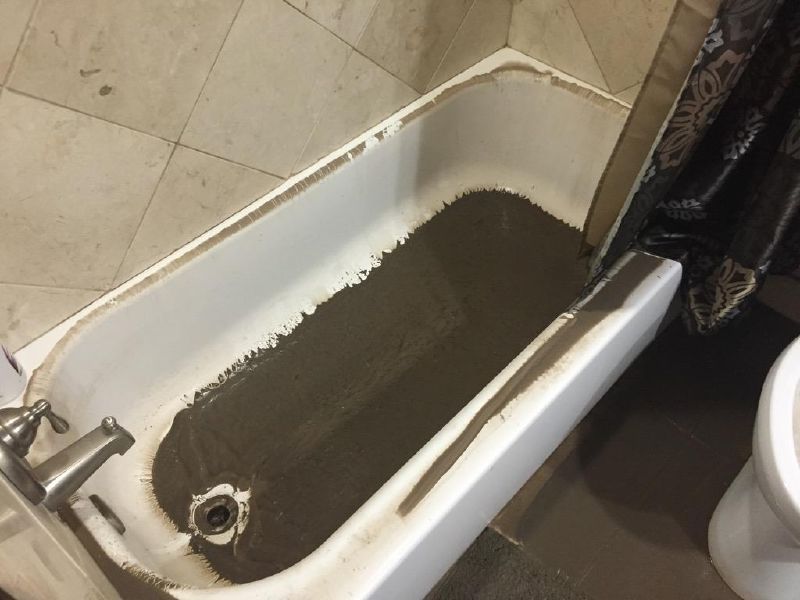Leading Reasons for Discharge Coming Up in the Bathtub
Leading Reasons for Discharge Coming Up in the Bathtub
Blog Article
The author is making several good pointers on What To Do If Sewage Starts Backing Up Into the Shower overall in the content down below.

Sewage backup in the tub can be a traumatic and unhygienic trouble for any property owner. Not just is it troublesome, however it likewise presents severe health threats and suggests underlying issues with the plumbing system. Understanding why sewer is showing up through the tub is critical for taking ideal action to resolve the issue efficiently.
Introduction to the Issue
Recognizing the Issue
When sewage draws back up right into the bath tub, it's a clear indicator of a trouble with the water drainage system. The wastewater that should be flowing away from your home is instead finding its back right into your space, which can lead to considerable damage and carcinogen.
Possible Reasons
Numerous variables can add to sewage back-up in the bathtub. From obstructions in the drain line to problems with the plumbing framework, recognizing the root cause is important for discovering a service.
Typical Reasons for Sewer Backup
Clogs in the Sewage System Line
One of one of the most usual causes of sewer back-up is a blockage in the drain line. This can happen because of the accumulation of particles, oil, or foreign objects in the pipelines, avoiding appropriate flow and causing sewer to back up right into your bathtub.
Tree Root Invasion
Tree roots looking for dampness and nutrients can infiltrate sewer lines through little splits or joints. Gradually, these origins can expand and broaden, causing substantial damage to the pipes and leading to sewer back-up concerns.
Aging Facilities
Older homes might have dated plumbing systems that are a lot more vulnerable to deterioration, splits, and deterioration. As pipelines age, they end up being more prone to leaks and clogs, enhancing the probability of sewer back-up occurrences.
Heavy Rainfall or Flooding
During durations of heavy rainfall or flooding, the sewer system might end up being overloaded with excess water, causing back-ups and overflows. This can result in sewage backing up into bathtubs and other fixtures inside the home.
Health And Wellness Risks Connected With Sewer Backup
Contamination of Water
Sewer back-up can infect the water supply in your home, posturing a significant wellness risk to you and your family. Direct exposure to infected water can bring about gastrointestinal concerns, skin infections, and other diseases.
Spread of Illness
Sewage consists of dangerous microorganisms, viruses, and bloodsuckers that can create a range of diseases, consisting of hepatitis, cholera, and gastroenteritis. Entering into contact with sewage or polluted surface areas places you in jeopardy of infection.
Mold and mildew Growth
Wetness from sewage backup can create optimal problems for mold development in your house. Mold and mildew spores can exacerbate breathing issues and create allergic reactions in sensitive individuals, making punctual cleaning essential.
Indicators of Sewer Back-up
Foul Odors
Unpleasant smells rising from drains pipes or fixtures, specifically in the bathroom, may show sewer backup problems. These smells are usually strong and relentless, indicating an issue that requires instant attention.
Slow Draining Fixtures
Bath tubs, sinks, and bathrooms that drain gradually or otherwise at all could be experiencing sewage back-up. If multiple components are affected simultaneously, it's most likely that the problem originates from a typical factor, such as the major drain line.
Gurgling Noises
Weird gurgling or gurgling sounds coming from drains when water is running somewhere else in the house are a sign of air trapped in the plumbing system. This air accumulation can result from sewer backup and ought to be investigated immediately.
Immediate Actions to Take
Turning Off Water Supply
In the event of sewer back-up, it's important to shut off the water system to prevent additional contamination and damage. Find the major water shutoff valve in your home and shut it off until the concern can be resolved.
Contacting a Specialist Plumber
Handling sewage backup is not a do it yourself task. Contact a certified plumber with experience in dealing with sewage-related concerns to assess the circumstance and carry out required fixings or cleanings.
Avoiding Contact with Contaminated Water
Up until the sewage back-up is settled, avoid contact with infected water to stop the spread of bacteria and microorganisms. Wear protective gear if you have to remain in the damaged area and clean your hands completely afterward.
Preventive Measures
Routine Maintenance of Drain Lines
Schedule routine evaluations and maintenance of your sewage system lines to identify and address prospective issues prior to they escalate into significant problems. This can include cleaning out debris, checking for tree root intrusion, and repairing any kind of damaged pipelines.
Setting Up Bayou Valves
Think about mounting bayou shutoffs in your plumbing system to avoid sewage from receding into your home throughout durations of heavy rainfall or flooding. These shutoffs instantly close when water starts backing up, securing your residential or commercial property from contamination.
Proper Disposal of Household Waste
Stay clear of purging anything apart from toilet tissue and human waste down the toilet to avoid clogs and clogs in the sewer line. Dispose of oil, oil, and other household chemicals properly to minimize the danger of plumbing issues.
Cleaning Up After Sewer Back-up
Sanitation Procedures
Thoroughly decontaminate and sanitize influenced locations after sewer backup to remove unsafe bacteria and protect against mold growth. Usage appropriate cleansing products and protective equipment to make sure secure and efficient cleaning.
Remediation of Affected Areas
Fix any type of damages to floor covering, walls, or components triggered by sewer backup. Relying on the extent of the damage, you may need to change carpets, drywall, or other materials to restore your home to its pre-loss condition.
Why Is Water Backing Up in My Bathtub When I Flush My Toilet?
What to do about a sewer line clog
First, don’t bother with plunging. No amount of plunging will dislodge the clog in a sewer line. The clog is too far away. Plungers are for clogs in the toilet itself, not the sewer line. Plus, the most likely causes of a sewer clog are:
Tree roots Flushed toys or feminine products Grease buildup Those items don’t move easily. And in the case of tree roots, the roots need to be cut out of the pipe and the pipe will need to be repaired.
You’ll need a closet auger. A closet auger is a type of plumber’s snake with a protective cover to keep from scratching the delicate porcelain toilet. If the clog is further down, you may need to remove the toilet or use one of your cleanouts to get to the clog.
We also recommend doing a video inspection of the drain to ensure that the cause of the clog has been completely removed. Otherwise, you could have the same problem again in a few days or weeks.
https://mspplumbingheatingair.com/blog/why-is-water-backing-up-in-my-bathtub-when-i-flush-my-toilet

Do you enjoy more info about Why is Sewage Backing Up Into My Bathtub?? Leave a remark down the page. We'd be glad to know your views about this page. We hope to see you back again in the near future. Are you aware of anybody else who is fascinated by the subject? Please feel free to promote it. I treasure your readership.
Schedule Today!
Report this page